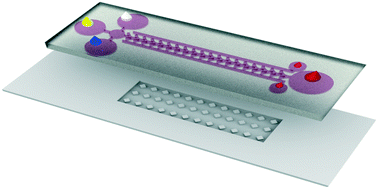A passive portable microfluidic blood–plasma separator for simultaneous determination of direct and indirect ABO/Rh blood typing
Abstract
The blood typing test is mandatory in any transfusion, organ transplant, and pregnancy situation. There is a lack of point-of-care (POC) blood typing that could perform both direct and indirect methods using a single droplet of whole blood. This study presents a new methodology combining a passive microfluidic blood–plasma separator (BPS) and a blood typing detector for the very first time, leading to a stand-alone microchip which is capable of determining the blood group from both direct and indirect methods simultaneously. The proposed design separates blood cells from plasma by applying hydrodynamic forces imposed on them, which overcomes the clogging issue and consequently maximizes the volume of the extracted plasma. An axial migration effect across the main channel is responsible for collecting the plasma in plasma collector channels. The BPS novel design approached 12% yield of plasma with 100% purity in approximately 10 minutes. The portable BPS was designed and fabricated to perform ABO/Rh blood tests based on the detection of agglutination in both antigens of RBCs (direct) and antibodies of plasma (indirect). The differences between agglutinated and non-agglutinated samples were distinguishable by the naked eye and also validated by particle analysis of microscopic pictures. The results of this passive BPS in ABO/Rh blood grouping verified the quality and quantity of the extracted plasma in practical applications.



 Please wait while we load your content...
Please wait while we load your content...